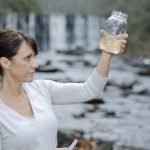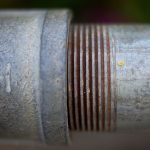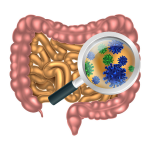Mitch Kennedy, ND
Before the 1940s, lead arsenate (LA) was the predominant pesticide used in fruit orchards. Introduced in 1892 in Massachusetts for use against the Gypsy moth, the pesticide was quickly adopted for use in fruit orchards, especially apples, because of its dramatic effect on the Codling moth. Even though arsenic residue was recognized as a problem as early as 1919, LA was the most widely used pesticide in the nation – recommended by the USDA and applied to millions of acres of crops – until the late 1940s, when DDT (considered at the time to be safer and more effective) became available. LA continued to be used in some locations into the 1970s, and was ultimately banned in 1988.
Today, apple orchard properties in production during the heyday of LA use are the focal point of environmental concerns. The pests peculiar to orchard crops were best controlled by frequent and high-concentration sprays over many years. For comparison, apple trees or peach trees would be dusted every week, while most field crops, such as corn, may have one or two applications during the entire season.
LA has a long half-life in the ground, because it binds tightly to the soil. The lead, being poorly soluble, is immobilized, typically within the top 12 to 18 inches of topsoil, but the arsenic penetrates deeper, as far as three or four feet. A study in the January/February 2006 issue of the Journal of Environmental Quality showed that arsenate in the soil can be remobilized by being disturbed.
As these farms become inactive, inherited by disinterested offspring and sold to developers, the issue of groundwater and soil contamination comes to the surface. While the U.S. EPA sets a clean-up level of 0.4 parts per million for arsenic, states can set their own levels, and some set them higher. New Jersey’s level, for example, is 50 times higher (20 ppm). As more farmland becomes disturbed, these metals come out during construction, landscaping and gardening by the homeowner. There have been no studies on the chronic effects of living on and around these contaminated soils.
What you should do: If you suspect lead or arsenic poisoning in your patient, ask if his or her home might be built on an old orchard. If you or someone you know is buying a home, ask the real estate agent and developer what existed on the property before the home was built. Even better, go to the Town Hall and look up the property deed records. If you still can’t get a straight answer, have the soil tested. Buyer beware!
 Mitch Kennedy, ND has a family practice in Avon, CT, and is the first ND with clinical privileges at the University of Connecticut, a teaching hospital. Before graduation from Southwest College, Kennedy earned an international reputation as a leader in pollution prevention, showing industries around the world how preventing pollution saves money.
Mitch Kennedy, ND has a family practice in Avon, CT, and is the first ND with clinical privileges at the University of Connecticut, a teaching hospital. Before graduation from Southwest College, Kennedy earned an international reputation as a leader in pollution prevention, showing industries around the world how preventing pollution saves money.





